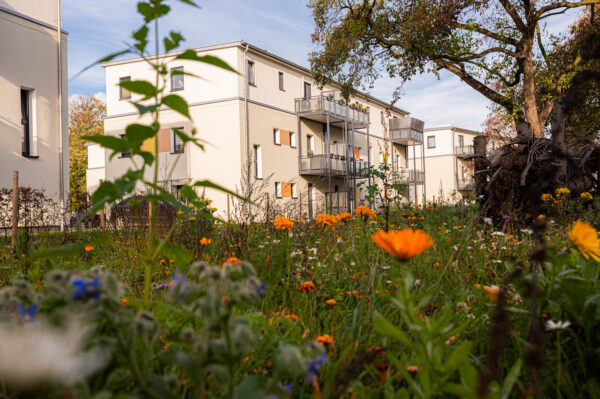Society and Contribution to Urban Development
GRI
3-3
203-1
413-1
UNGC
Principle 1
Disclosure
The requirements for planning, new construction and conversion of residential buildings and entire neighborhoods are becoming increasingly complex, particularly in light of climate-neutral and low-energy construction and living (see Environment and Climate). Added to this are the continual changes in individual needs and social structures (see Living at Fair Prices), the ongoing trend of moving into urban areas and, last but not least, the demographic change toward older societies (see Homes That Meet People´s Needs and Demographic Change). All of these factors are interdependent. They represent the main challenges for a sustainable real estate sector that is fit for the future. And they put the limelight on the issue of the best-possible, future-proof design of neighborhoods.
Our focus lies on the neighborhood as the main design area for integrated living concepts. Vonovia specifically targets social and ecological needs because sustainability is more than just climate-neutral housing stock: Social and economic aspects play an important role, especially in terms of building functionality that is suitable for the intended use, a high quality of accommodation and living, and long-term stability of value.
- Holistic orientation of future neighborhood development projects while taking our environmental and social responsibilities seriously
- Portfolio segmentation aligned with neighborhood approach: around 70% of our portfolio located in areas that make up urban quarters
- 18 neighborhood development projects with around 9,600 residential units under implementation (investment volume of € 78.5 million)
- Internal knowledge management for neighborhoods (Neighborhood Academy and Vonovia Neighborhood Guide) successfully expanded and continued
- Immediate aid and employee volunteering for Ukrainian refugees in Germany
- Grants for social/cultural projects and facilities of approx. € 1.2 million
- More than 9,800 m2 of rent-free or discounted commercial space made available for social institutions (in Germany)
People want to live in a safe environment and feel “at home.” A balanced mix of rented apartments and condominiums, the integration of small businesses, attractive and accessible open and communal spaces, the availability of local suppliers, modern transport connections and mobility, good educational facilities, and social and cultural amenities – the interplay of all these factors promotes diverse and vibrant neighborhoods. This is also becoming increasingly important to tenants. The real estate sector has a significant responsibility here and can simultaneously offer its own expertise from direct contact with tenants to the design processes involved. The interaction of these factors encourages climate-friendly, diverse and lively neighborhoods that are fit for the future.
In order to successfully implement the measures and changes to the neighborhoods, we not only need the support of the residents but also often political assistance. We include both in the planned measures. This allows us to take any concerns on board and include them in the development of solutions. We believe talking to local residents and including them is a great opportunity to develop our neighborhoods together, which has a positive impact on the satisfaction of our tenants and promotes social cohesion.
As a big player in the real estate industry, Vonovia is aware of its role in terms of enabling forward-looking, philanthropic and sustainable urban development. We believe that the social infrastructure in neighborhoods, including the communal facilities and local engagement that give it its character, is vital for cohesion of society as a whole. A cohesive civil society with all its social and cultural offerings creates space for diversity and contributes significantly to the attractiveness and liveliness of neighborhoods.
We have identified Neighborhood Development and Contribution to Infrastructure as a material topic. It is supplemented by the important topics of Integration, Diversity and Social Cohesion, as well as Dialogue with Tenants and Participation. The section below provides information about our approach, the steps we have taken to integrate this approach into our processes and our targets and measures.


